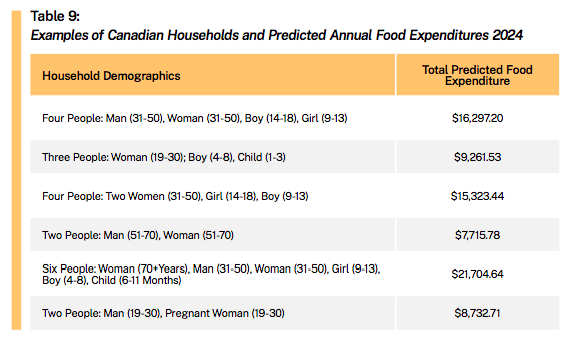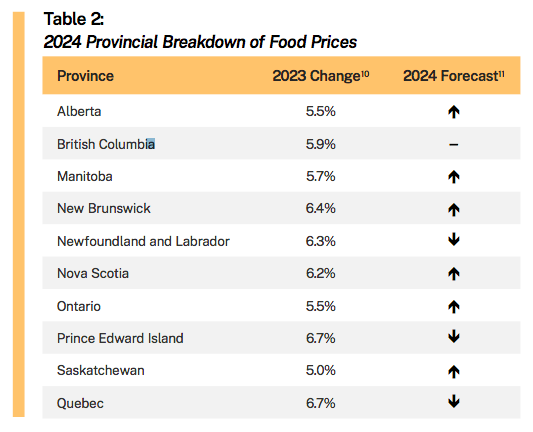
A Canadian family of four is expected to spend nearly $16,300 on food in 2024, more than $700 from last year, according to a new report.
On Thursday, Canada’s annual Food Price Report was published. It was conducted by over 30 experts from Dalhousie University, the University of Guelph, the University of Saskatchewan and the University of British Columbia. The report uses data and analytic tools to make predictions about Canadian food prices.
“The year 2023 posed significant financial challenges for Canadian families, one of the toughest in recent memory,” Dalhousie University Project Lead, Professor, and Director of the Agri-Food Analytics Lab Dr. Sylvain Charlebois said in a statement.
Overall, Canada’s Food Price Report found that food prices as a whole will increase by 2.5 per cent to 4.5 per cent in the new year. This is a slight improvement to the country’s current average food inflation rate of five to seven per cent.
“The estimated increase of 2.5-4.5 per cent for 2024 provides customers with much needed relief from the higher increases observed in previous years,” University of Saskatchewan Agri-Food Innovation and Sustainability Enhancement Chair Stuart Smyth said in a statement.
“They should expect to see a degree of stability return to food prices. I am optimistic that the phrase ‘sticker-shock’ will become less commonly used throughout grocery stores in 2024,” he continued.
The report says the most significant increases range from five percent to seven per cent in the categories of bakery, meat, and vegetables.
2024 Canadian food prices forecast:
Bakery: 5% to 7%
Dairy: 1% to 3%
Fruit: 1% to 3%
Meat: 5% to 7%
Other: 2% to 4%
Restaurants: 3% to 5%
Seafood: 3% to 5%
Vegetables: 5% to 7%
In addition, researchers anticipate that a family of four will spend an estimated $16,297.20 on food in 2024, an increase of up to $701.79 from the previous year.

The reports attributes this year’s rise in food prices to a variety of factors, including the COVID-19 pandemic, and climate change events that have had adverse effects on harvests (wildfires, floods), global events such as the conflict in Ukraine, and the phenomenon of “shelflation,” potentially contributing to the price increases faced by Canadians.
“The issue of food affordability remained a top concern as prices continued to rise throughout the year. Food Bank Canada’s 2023 Hunger Count revealed there were nearly 2 million visits to food banks in Canada, a 32 per cent increase compared to March 2022 and a very significant 78.5 per cent increase over March 2019. This is the highest level of food bank use in Canada on record,” the report read.
Despite inflation, researchers reveal Canadians spent less on food this year. Food retail sales data showed a decline in monthly spend per capita between Aug. 2022 and Aug. 2023 (from $261.24 to $252.89).
“Estimated annual spending for a family of four in the past year was $693 lower than originally projected. However, this decrease is a concern to researchers. Reduced expenditures in the face of elevated food prices indicates Canadians are decreasing the quantity and quality of food they are buying,” a release read.
The report predicts that the country will face a widespread increase in food inflation in the coming year due to increasing costs of housing, energy, the influence of climate change and other expenditures. Researchers are foreseeing that all provinces will experience price increases of up to 4.5 per cent.













